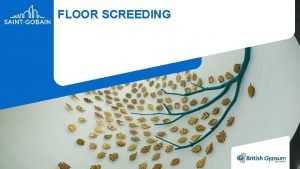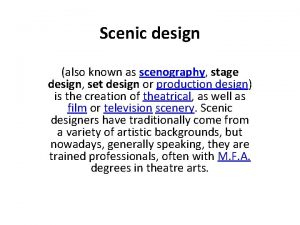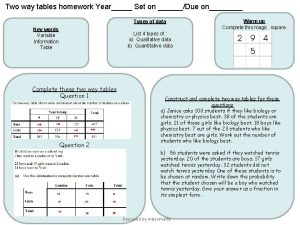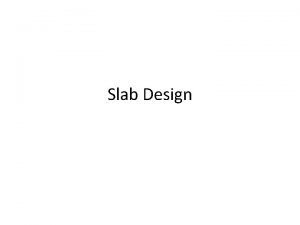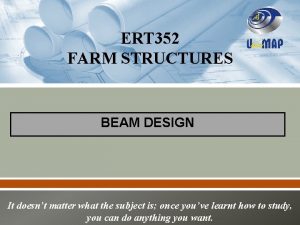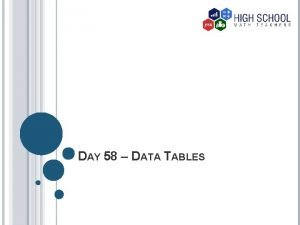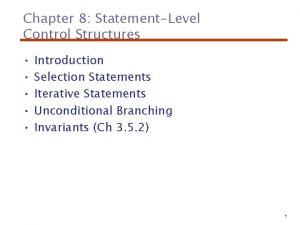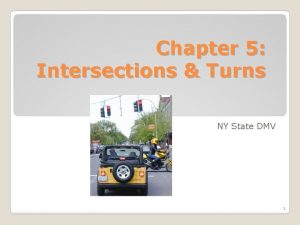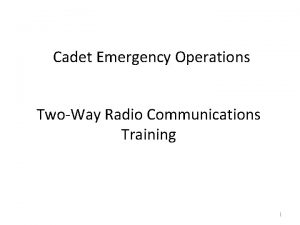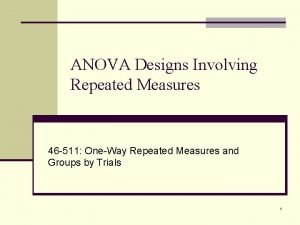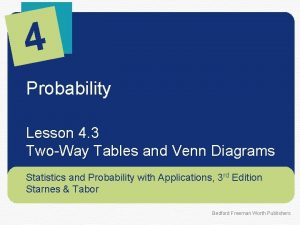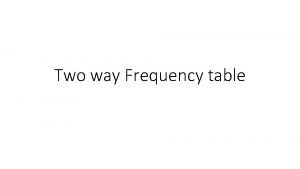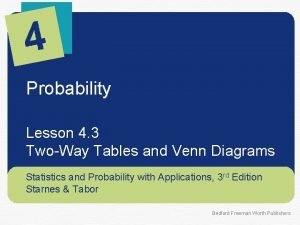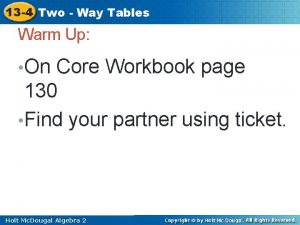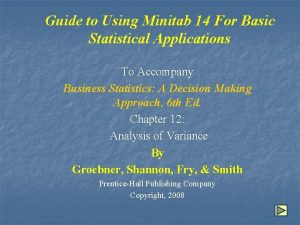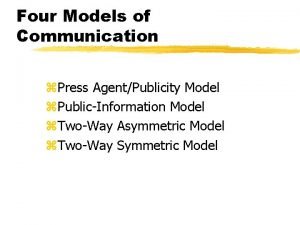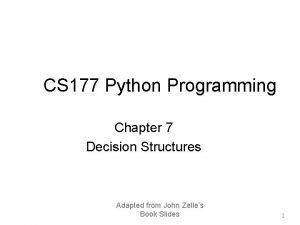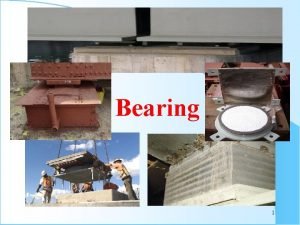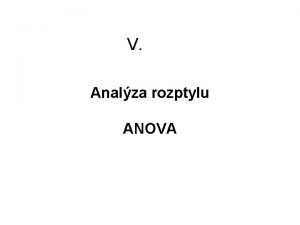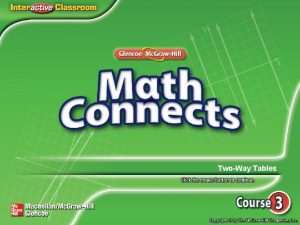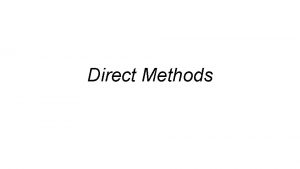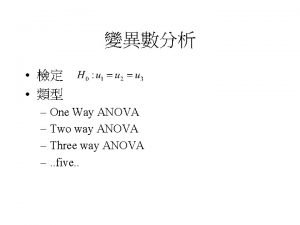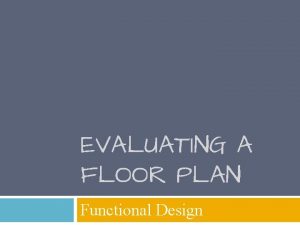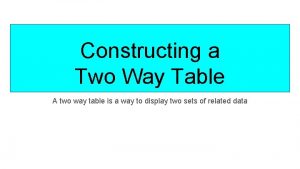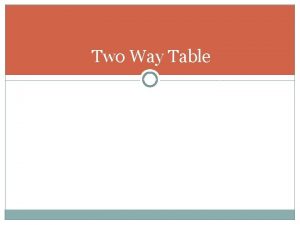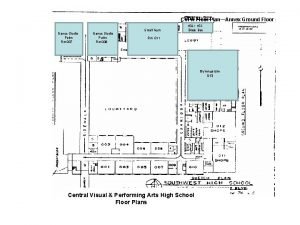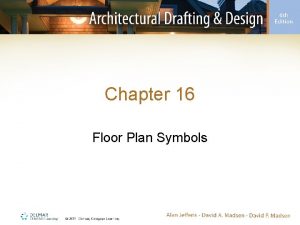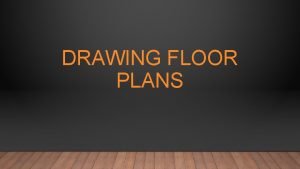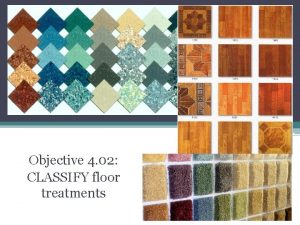Direct Design Method Design of Two Way Floor

![Given data [Problem-1] Figure-1 shows a two-way slab floor with a total area of Given data [Problem-1] Figure-1 shows a two-way slab floor with a total area of](https://slidetodoc.com/presentation_image_h/11138aa5f93549900fc06113dc490ce2/image-2.jpg)



![Given data [Problem-2] For the two-way slab with beams design problem-1, Compute the ratio Given data [Problem-2] For the two-way slab with beams design problem-1, Compute the ratio](https://slidetodoc.com/presentation_image_h/11138aa5f93549900fc06113dc490ce2/image-6.jpg)








![Given data [Problem-3] For the two-way slab with beams problem-1, Determine the minimum thickness Given data [Problem-3] For the two-way slab with beams problem-1, Determine the minimum thickness](https://slidetodoc.com/presentation_image_h/11138aa5f93549900fc06113dc490ce2/image-15.jpg)



![Given data [Problem-4] For the two-way slab with beams problem-1, Show that the six Given data [Problem-4] For the two-way slab with beams problem-1, Show that the six](https://slidetodoc.com/presentation_image_h/11138aa5f93549900fc06113dc490ce2/image-19.jpg)




![Given data [Problem-5] For the two-way slab with beams problem-1, Determine the longitudinal moments Given data [Problem-5] For the two-way slab with beams problem-1, Determine the longitudinal moments](https://slidetodoc.com/presentation_image_h/11138aa5f93549900fc06113dc490ce2/image-24.jpg)









![Given data [Problem-6] For the two-way slab with beams problem-1, Compute the tensional constant Given data [Problem-6] For the two-way slab with beams problem-1, Compute the tensional constant](https://slidetodoc.com/presentation_image_h/11138aa5f93549900fc06113dc490ce2/image-34.jpg)






![Given data [Problem-7] For the two-way slab with beams as described in problem-1, Distribute Given data [Problem-7] For the two-way slab with beams as described in problem-1, Distribute](https://slidetodoc.com/presentation_image_h/11138aa5f93549900fc06113dc490ce2/image-41.jpg)



















![Given data [Problem-8] Investigate if the preliminary slab thickness of 6. 5” in the Given data [Problem-8] Investigate if the preliminary slab thickness of 6. 5” in the](https://slidetodoc.com/presentation_image_h/11138aa5f93549900fc06113dc490ce2/image-61.jpg)




- Slides: 65

Direct Design Method Design of Two Way Floor System for Slab with Beams
![Given data Problem1 Figure1 shows a twoway slab floor with a total area of Given data [Problem-1] Figure-1 shows a two-way slab floor with a total area of](https://slidetodoc.com/presentation_image_h/11138aa5f93549900fc06113dc490ce2/image-2.jpg)
Given data [Problem-1] Figure-1 shows a two-way slab floor with a total area of 12, 500 sq ft. It is divided into 25 panels with a panel size of 25 ft x 20 ft. Concrete strength is and steel yield strength is fy=40, 000 psi. Service live load is to be taken as 120 psf. Story height is 12 ft. The preliminary sizes are follows: slab thickness is 6. 5 in. ; long beams are 14 28 in. Overall; short beams are 12 24 in. overall; columns are 15 in. The four kinds of panels (corner, long-sided edge, short-sided edge, and interior) are numbered 1, 2, 3, and 4 in Fig. -1. Determine the total factored static moment in a loaded span in each of the four equivalent 2 rigid frames whose widths are designated A, B, C and D in Fig. 2.

Given data Fig. -1 3

For two way slab (with beams), the total factored static moment in a loaded span in each of the four equivalent rigid frame whose widths are designated A, B, C and D in Fig. 2 Fig. -2 4

The factored load wu per unit floor area is wu=1. 2 w. D +1. 6 w. L =1. 2(6. 5)(150/12) +1. 6(120) =114 + 204 =318 psf ACI states that Ln shall extend from face to face of columns, capitals or walls. For frame A, For frame B, Mo = 224 ft-kips For frame C, For frame D, Mo = 175 ft-kips 5
![Given data Problem2 For the twoway slab with beams design problem1 Compute the ratio Given data [Problem-2] For the two-way slab with beams design problem-1, Compute the ratio](https://slidetodoc.com/presentation_image_h/11138aa5f93549900fc06113dc490ce2/image-6.jpg)
Given data [Problem-2] For the two-way slab with beams design problem-1, Compute the ratio of the flexural stiffness of the longitudinal beam to that of the slab in the equivalent rigid frame for all the beams around panels 1, 2, 3, and 4 in Fig. -3. 6

where h=overall beam depth t=overall slab thickness b. E=effective width of flange bw=width of slab For the two way slab (with beams), the ratio α of the flexural stiffness of the longitudinal beam to that of the slab in the equivalent rigid frame, for all the beams around panels 1, 2, 3, and 4 in Figure. 7

(a) B 1 -B 2, Referring to Fig. 3, the effective width b. E for B 1 -B 2 is the smaller of 14 + 2 (21. 5) = 57 and 14 + 8 (6. 5) =66 thus b. E = 57 in. Using Eq. 11 Fig. -3

Fig. -4

In which where h = overall beam depth t =overall slab thickness b. E =effective width of flange bw = width of web

(a) B 1 -B 2, Using Eq. 9, where Ecb=Ecs 11

(b) B 3 -B 4, Referring to Fig. 3, the effective width b. E for B 3 -B 4 is the smaller of 14 + 21. 5 =35. 5 in. and 14 + 4 (6. 5) = 40; thus b. E = 35. 5 in. Using Eq. 11 Using Eq. 9, where Ecb=Ecs 12

(c) B 5 -B 6, Referring to Fig. 4, the effective width b. E for B 5 -B 6 is the smaller of 12 + 2 (17. 5) = 47 in. and 12 + 8 (6. 5) = 64 thus b. E = 47 in. Using Eq. 11 Using Eq. 9, where Ecb=Ecs

(d) B 7 -B 8, Referring to Fig. 4, the effective width b. E for B 7 -B 8 is the smaller of 12 +17. 5 = 29. 5 in. and 12 + 4 (6. 5) = 38; thus b. E = 29. 5 in. Using Eq. 11 Using Eq. 9, where Ecb=Ecs The resulting values for B 1 to B 8 around panels 1, 2, 3 and 4 are shown in Fig. 4. For the design, the values vary between 3. 55 and 13. 83; thus the equivalent rigid frames have their substantial portion along or close to the column lines, even 14 though their widths vary from 10 to 25 ft.
![Given data Problem3 For the twoway slab with beams problem1 Determine the minimum thickness Given data [Problem-3] For the two-way slab with beams problem-1, Determine the minimum thickness](https://slidetodoc.com/presentation_image_h/11138aa5f93549900fc06113dc490ce2/image-15.jpg)
Given data [Problem-3] For the two-way slab with beams problem-1, Determine the minimum thickness requirement for deflection control; and compare it with the preliminary thickness of 6. 5 in. 15

The average ratios αm for panels 1, 2, 3, and 4 may be computed from the α values shown in Fig. 4; thus 16

Minimum slab thickness for deflection control Slabs Supported on Beams. Slabs supported on shallow beams where αm ≤ 0. 2. The minimum slab thickness requirements are the same as for slabs without interior beams. Slabs supported on medium stiff beams where 0. 2 < αm < 2. 0. For this case, The minimum is not be less than 5 in. Slabs supported on very stiff beams where αm > 2. 0. For this case, The minimum is not to be less than 3. 5 in.

Since the αm values for all four panels are well above 2, Eq. 13 applies. The minimum thickness for all panels, using Ln=24 ft, Sn=18. 83 ft, and fy=40, 000 psi, become If a uniform slab thickness for the entire floor area is to be used, the minimum for deflection control is 6. 07 in. , which compares well with the 6. 5 in. preliminary thickness. 18
![Given data Problem4 For the twoway slab with beams problem1 Show that the six Given data [Problem-4] For the two-way slab with beams problem-1, Show that the six](https://slidetodoc.com/presentation_image_h/11138aa5f93549900fc06113dc490ce2/image-19.jpg)
Given data [Problem-4] For the two-way slab with beams problem-1, Show that the six limitations of the direct design method are satisfied. 19

(7) Limitations of Direct Design Method (1) There is a minimum of three continuous spans in each direction. (2) Panels must be rectangular with the ratio of longer to shorter span center-to-center of supports within a panel not greater than 2. 0. (3) The successive span lengths center-to-center of supports in each direction do not differ by more than one-third of the longer span. (4) Columns are not offset more than 10% of the span in the direction of the offset.

(7) Limitations of Direct Design Method (5) The load is due to gravity only and is uniformly distributed over an entire panel, and the service live load does not exceed two times the service dead load. (6) The relative stiffness ratio of L 21/α 1 to L 22/α 2 must lie between 0. 2 and 5. 0, where is the ratio of the flexural stiffness of the included beam to that of the slab.

The first four limitations are satisfied by inspection. For the fifth limitation, For the sixth limitation, referring to Fig. 3&4 and taking L 1 and L 2 in the long and short directions, respectively, poll Panel 1, 22

Panel 2, Panel 3, Panel 4 23
![Given data Problem5 For the twoway slab with beams problem1 Determine the longitudinal moments Given data [Problem-5] For the two-way slab with beams problem-1, Determine the longitudinal moments](https://slidetodoc.com/presentation_image_h/11138aa5f93549900fc06113dc490ce2/image-24.jpg)
Given data [Problem-5] For the two-way slab with beams problem-1, Determine the longitudinal moments in frames A, B, C, and D. as shown in Fig. 2&5. 24

(a) Check the six limitations for the direct design method. These limitations have been checked previously. (b) Total Factored Static Moment Mo The total factored static moments M 0 for the equivalent rigid frames A, B, C, and D have been computed previously; they are M 0 (frame A) = 448 ft-kips M 0 (frame B) = 224 ft-kips M 0 (frame C) = 349 ft-kips M 0 (frame D) = 175 ft-kips 25

26

Fig. -5 27

Fig. -6 28

Longitudinal Moments in the frames The longitudinal moments in frames A, B, C, and D are computed using Case-2 of Fig. 21(DDM) for the exterior span and Fig. 19(DDM) for the interior span. The computations are as shown below, and the results are summarized in Fig. -5&6.

For Frame A: M 0=448 ft-kips Mneg at exterior support = 0. 16(448) =72 ft-kips Mpos in exterior span = 0. 57(448) =255 ft-kips Mneg at first interior support = 0. 70(448) =313 ft-kips Mneg at typical interior support = 0. 65(448) =291 ft-kips Mpos in typical interior span = 0. 35(448) =157 ft-kips 30

For Frame B: M 0=224 ft-kips Mneg at exterior support = 0. 16(224) =36 ft-kips Mpos in exterior span = 0. 57(224) =128 ft-kips Mneg at first interior support = 0. 70(224) =157 ft-kips Mneg at typical interior support = 0. 65(224) =146 ft-kips Mpos in typical interior span = 0. 35(224) =78 ft-kips 31

For Frame C: M 0=349 ft-kips Mneg at exterior support = 0. 16(349) =56 ft-kips Mpos in exterior span = 0. 57(349) =199 ft-kips Mneg at first interior support = 0. 70(349) =244 ft-kips Mneg at tupical interior support = 0. 65(349) =227 ft-kips Mpos in typical interior span = 0. 35(349) =122 ft-kips 32

For Frame D: M 0=175 ft-kips Mneg at exterior support = 0. 16(175) =28 ft-kips Mpos in exterior span = 0. 57(175) =100 ft-kips Mneg at first interior support = 0. 70(175) =123 ft-kips Mneg at tupical interior support = 0. 65(175) =114 ft-kips Mpos in typical interior span = 0. 35(175) =61 ft-kips 33
![Given data Problem6 For the twoway slab with beams problem1 Compute the tensional constant Given data [Problem-6] For the two-way slab with beams problem-1, Compute the tensional constant](https://slidetodoc.com/presentation_image_h/11138aa5f93549900fc06113dc490ce2/image-34.jpg)
Given data [Problem-6] For the two-way slab with beams problem-1, Compute the tensional constant C for the edge and interior beams in the short and long directions 34

The torsional constant C equals, where x = shorter dimension of a component rectangle y = longer dimension of a component rectangle and the component rectangles should be taken in such a way that the largest value of C is obtained.

Each cross-section shown in Fig. 7 may be divided into component rectangles in two different ways and the larger value of C is to be used. Fig. -7 36

For long direction,

For long direction,

For short direction,

For short direction, 40
![Given data Problem7 For the twoway slab with beams as described in problem1 Distribute Given data [Problem-7] For the two-way slab with beams as described in problem-1, Distribute](https://slidetodoc.com/presentation_image_h/11138aa5f93549900fc06113dc490ce2/image-41.jpg)
Given data [Problem-7] For the two-way slab with beams as described in problem-1, Distribute the longitudinal moments computed for frames A, B, C, and D [Fig. 5&6] into three parts-- for the longitudinal beam, for the column strip slab, and for the middle strip slab. 41

(a) Negative moment at the face of exterior support. For Frame A,

(a) Negative moment at the face of exterior support. Table-1 shows the linear interpolation for obtaining the column strip percentages from the prescribed limits of Table-2(DDM). The total moment of 72 ft-kips is divided into three parts, 92. 6% to column strip (of which 85% goes to the beam and 15% to the slab since and 7. 4% to the middle strip slab. The results are shown in Table-2 43

Table-: Percentage of longitudinal moment in column strip ASPECT RATIO L 2/L 1 Negative moment at α 1 L 2/L 1 = 0 exterior support α 1 L 2/L 1 > 1. 0 0. 5 1. 0 2. 0 βt=0 100 100 βt 2. 5 75 75 75 βt = 0 100 100 βt> 2. 5 90 75 45 α 1 L 2/L 1 =0 60 60 60 α 1 L 2/L 1 > 1. 0 90 75 45 Negative moment at α 1 L 2/L 1 =0 75 75 75 interior support α 1 L 2/L 1 > 1. 0 90 75 45 Positive moment

Table-1: Linear interpolation for column strip percentage of exterior negative moment-frame A 0. 5 0. 8 1. 0 βt=0 100% βt=0. 98 96. 1% 92. 6% 90. 2% βt≥ 2. 50 90% 81% 75%

(b) Negative moments at exterior face of first interior support and at face of typical interior support. Frame A Using the prescribed values in Table-2(DDM), the proportion of moment going to the column strip is determined to be 81% by linear interpolation. 0. 5 0. 8 1. 0 90% 81% 75%

Table-2: Transverse Distribution of Longitudinal Moments Frame A Total width = 20 ft, Column strip width=10 ft, Middle strip width = 10 ft EXTERIOR SPAN EXTERIOR NEGATIVE Total Moment INTERIOR SPAN POSITIVE INTERIOR NEGATIVE POSITIVE -72 +255 -313 -291 +157 Moment in beam -57 +176 -216 -200 +108 Moment in column strip slab -10 +31 -38 -36 +19 Moment in middle strip slab -5 +49 -60 -55 +30 -72 -313 +255 -291 +157 Moments in A 47

(a) Negative moment at the face of exterior support. Frame B,

(b) Negative moments at exterior face of first interior support and at face of typical interior support. Frame B, The proportion of moment is 81% for column strip, the same as for frame A. 49

Table-3: Transverse distribution of longitudinal moments Frame B TOTAL WIDTH = 10 ft, COLUMN STRIP WIDTH=5 ft, MIDDLE STRIP WIDTH = 5 ft EXTERIOR SPAN EXTERIOR NEGATIVE Total Moment INTERIOR SPAN POSITIVE INTERIOR NEGATIVE POSITIVE -36 +128 -157 -146 +78 Moment in beam -28 +88 -101 +54 Moment in column strip slab -5 +16 -19 -17 +9 Moment in middle strip slab -3 +25 -30 -28 +15 -36 -157 -146 +128 +78 Moments in B 50

(a) Negative moment at the face of exterior support. Frame C,

(a) Negative moment at the face of exterior support. Table-4 shows the linear interpolation for obtaining the column strip percentage from the prescribed limits of Table-2(DDM). The total moment of 56 ft-kips is divided into three parts, 81. 9% to column strip (of which 85% goes to the beam and 15% to the slab since and 18. 1% to the middle strip slab. The results are summarized in Table-5 Table-4: Linear interpolation for column strip percentage of exterior negative moment-frame C L 2/L 1 0. 5 0. 8 1. 0 βt=0 100% βt=1. 39 86. 1% 81. 9% 69. 4% βt≥ 2. 50 75% 67. 5% 45% 52

(b) Negative moments at exterior face of first interior support and at face of typical interior support. Frame C, Using the prescribed values in Table-2(DDM), the proportion of moment going to the column strip is determined to be 67. 5% by linear interpolation: 1. 0 1. 25 2. 0 75% 67. 5% 45% 53

Table-5: Transverse Distribution of Longitudinal Moments in Two. Way Slab with beams Frame C TOTAL WIDTH = 25 ft, COLUMN STRIP WIDTH=10 ft, MIDDLE STRIP WIDTH = 15 ft EXTERIOR SPAN EXTERIOR NEGATIVE Total Moment INTERIOR SPAN POSITIVE INTERIOR NEGATIVE POSITIVE -56 +199 -244 -227 +122 Moment in beam -39 +114 -140 -130 +70 Moment in column strip slab -7 +20 -25 -23 +13 Moment in middle strip slab -10 +65 -79 -74 +40 -56 -244 +199 -227 +122 Moments in C 54

(a) Negative moment at the face of exterior support. Frame D, 55

(b) Negative moments at exterior face of first interior support and at face of typical interior support. Frame D, The proportion of moment is again 67. 5% for column strip, the same as for frame C. 56

Table-6: Transverse distribution of longitudinal moments Frame D TOTAL WIDTH = 25 ft, COLUMN STRIP WIDTH=10 ft, MIDDLE STRIP WIDTH = 15 ft EXTERIOR SPAN EXTERIOR NEGATIVE Total Moment INTERIOR SPAN POSITIVE INTERIOR NEGATIVE POSITIVE -28 +100 -123 -114 +61 Moment in beam -20 +57 -71 -65 +35 Moment in column strip slab -3 +10 -12 +6 Moment in middle strip slab -5 +33 -40 -37 +20 -123 +100 -114 +61 -28 Moments in D 57

(c) Positive moments in exterior and interior spans. Since the prescribed limits for are the same for positive moment and for negative moment at interior support. The percentage of column strip moment for positive moments in exterior and interior spans are identical to those for negative moments as determined in part (b) above. 58

Table-4: Design of reinforcement in column strip EXTERIOR SPAN INTERIOR SPAN LINE NUMBER ITEM 1 Moment, Table-2, line 3 (ftkips) 2 Width b of drop or strip (in. ) 3 Effective depth d (in. ) 4 Mu/Ø (ft-kips) 5 Rn(psi)= Mu/(Øbd 2) 6 ρ, Eq. or Table A. 5 a 7 As = ρbd 8 As =0. 002 bt* 9 N=larger of (7) or(8)/0. 31 10 N=width of strip/(2 t) 11 N required, larger of (9) or (10) NEGATIV E MOMENT POSITIV E MOMEN T NEGATIV E MOMENT 59

Table-5: Design of reinforcement in Middle Strip EXTERIOR SPAN LINE NUMBER ITEM 1 Moment, Table 3, line 4 (ftkips) 2 Width b of strip (in. ) 3 Effective depth d (in. ) 4 Mu/Ø (ft-kips) 5 Rn(psi)= Mu/(Øbd 2) 6 ρ 7 As = ρbd 8 As =0. 002 bt 9 N=larger of (7) or(8)/0. 31* 10 N=width of strip/(2 t) 11 N required, larger of (9) or (10) NEGATIV E MOMENT POSITIV E MOMEN T INTERIOR SPAN NEGATIV E MOMENT POSITIV E MOMEN T NEGATIV E MOMENT 60
![Given data Problem8 Investigate if the preliminary slab thickness of 6 5 in the Given data [Problem-8] Investigate if the preliminary slab thickness of 6. 5” in the](https://slidetodoc.com/presentation_image_h/11138aa5f93549900fc06113dc490ce2/image-61.jpg)
Given data [Problem-8] Investigate if the preliminary slab thickness of 6. 5” in the two-way slab with beams design example as described in problem-1, is sufficient for resisting flexure and shear. 61

For each of the equivalent frames A, B, C and D, the largest bending moment in the slab occurs at the exterior face of the first interior support in the middle strip slab. From tables-2, 3, 5, 6, this moment is observed to be 60/10, 30/5, 75/15, or 40/7. 5 ftkips per ft. of width in frames A, B, C and D, respectively. Taking the effective depth to the contact level between the reinforcing bars in the two directions, and assuming #5 bars. averaged d =6. 50 -0. 75 -0. 63=5. 12 in. The largest Rn required is 62

Reinforcement ratio for this value of Rn is 0. 0067, which is well below Hence excessive deflection should not be expected; this is further verification of the minimum thickness formula given in ACI.

The factored floor load wu is wu=1. 2 w. D+1. 6 w. L=318 psf Since all 1 L 2/L 1 values are well over 1. 0, take V from Eq. 18(DDM) as

65
 Direct design method two way slab
Direct design method two way slab One way table and two way table
One way table and two way table Perbedaan one way dan two way anova
Perbedaan one way dan two way anova Disadvantages of threaded binary tree
Disadvantages of threaded binary tree Perbedaan two way anova dan one way anova
Perbedaan two way anova dan one way anova Anova hypothesis examples
Anova hypothesis examples One way anova vs two way anova
One way anova vs two way anova Analisis two way anova
Analisis two way anova Communication and community development
Communication and community development Principle of bilingual method
Principle of bilingual method Pros and cons of direct method
Pros and cons of direct method Direct method and grammar translation method
Direct method and grammar translation method Principles of conventional software engineering
Principles of conventional software engineering One was a ship
One was a ship Talk this way
Talk this way Advantages of symposium
Advantages of symposium Direct design method of flat slab
Direct design method of flat slab Screed rule
Screed rule Envelope method of drug distribution
Envelope method of drug distribution Indirect characterization meaning
Indirect characterization meaning Scenic design definition
Scenic design definition Apa yang dimaksud menampilkan karya tari
Apa yang dimaksud menampilkan karya tari Two way anova minitab 17
Two way anova minitab 17 Conditional frequencies
Conditional frequencies Two-way anova r
Two-way anova r Two way table
Two way table Two way tables homework 5
Two way tables homework 5 Two way anova örnek
Two way anova örnek Difference between one & two way slab
Difference between one & two way slab Drivers ed street signs
Drivers ed street signs Repeated measures anova f value
Repeated measures anova f value Marginal frequency
Marginal frequency Intermediate beam design
Intermediate beam design What is a two way relative frequency table
What is a two way relative frequency table Two way selection in c
Two way selection in c Left turn from a two way street
Left turn from a two way street Active directory two way trust
Active directory two way trust Two way radio communication training
Two way radio communication training Ssres formula
Ssres formula Two way selection and multiway selection
Two way selection and multiway selection Two way selection and multiway selection in c
Two way selection and multiway selection in c Lesson 4.3 two way tables and venn diagrams
Lesson 4.3 two way tables and venn diagrams Unlicensed two-way radios
Unlicensed two-way radios What are joint relative frequencies
What are joint relative frequencies Gcse probability questions
Gcse probability questions Venn diagram and two way tables
Venn diagram and two way tables Public information model
Public information model Two way joist slab
Two way joist slab 5 product levels
5 product levels Examples of two-way communication in schools
Examples of two-way communication in schools Two way table quiz
Two way table quiz Felipe surveyed students at his school
Felipe surveyed students at his school Taocoin
Taocoin Two way decision python
Two way decision python Two way decision python
Two way decision python Two way radio etiquette
Two way radio etiquette Two way anova minitab 17
Two way anova minitab 17 Two way asymmetrical model example
Two way asymmetrical model example Multi way decisions in python
Multi way decisions in python Two way anova sas
Two way anova sas Bridge bearing types
Bridge bearing types Area of refuge signage
Area of refuge signage Bartlettův test
Bartlettův test Two way table vocabulary
Two way table vocabulary Two way interactive communication
Two way interactive communication Anova table
Anova table

















